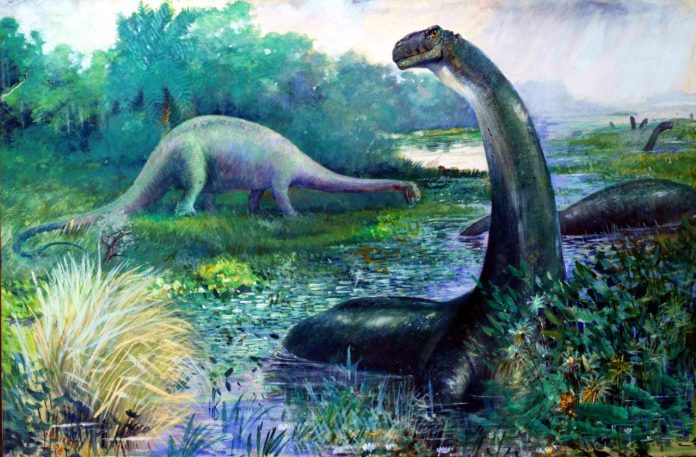After 145 years Brontosaurus has regained its status as a unique dinosaur species. Paleontologists Emanuel Tschopp, Octávio Mateus, and Roger Benson have made an exhaustive examination of the known fossils that were once claimed to be a Brontosaurus and have found enough differences between these fossils and other similar dinosaurs to allow the Brontosaurus to be a new species.
The original Brontosaurus found in 1903 did not have a head. Likewise, other fossils of Brontosaurus did not have a head. The lack of a head and the similarity in size and shape of the Brontosaurus fossils to Apatosaurus indicated that the two animals were in fact the same animal Apatosaurus. The decision became finalized in 1970 when researchers showed that Apatosaurus had a slender head similar in shape to a horse’s head and was a member of the Diplodocus group.
The error from the past was due to the lack of equipment to define the fine differences in bone structure and anatomy that is possible today. The researchers found sufficient evidence that Brontosaurus was a distinct species even without a head. While it is not absolutely official as of yet, the evidence that Brontosaurus is and always was a unique and different type of dinosaur is expected to change the history of paleontology and force a rewrite of most paleontology texts.
The scientists of the past made the best decision based on evidence provided by the equipment that they had at the time. CT scans and the capacity to create a three-dimensional representation of dinosaurs from flattened fossils has produced a host of new discoveries about dinosaurs. Brontosaurus is once again and hopefully for the last time a distinct species of dinosaur.















